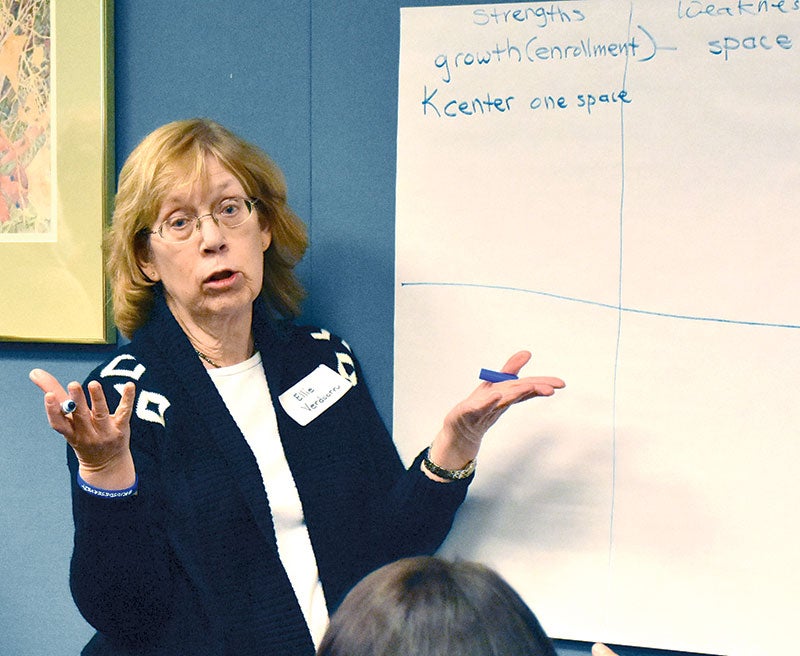Task force begins space study; Group will look into needs at preschool and elementary school buildings
Published 8:14 am Wednesday, January 31, 2018

- Woodson kindergarten teacher Ellie Verdoorn discusses a point with another task force member Monday at a meeting to begin the study of school space needs in Austin. Deb Nicklay/deb.nicklay@austindailyherald.com
A task force gathered Monday to start its study on space needs in Austin’s preschool and elementary school buildings, pressured by an enrollment that has grown by 1,000 students over almost 10 years.
The meeting was the first step taken to formulate a recommendation that will hopefully be delivered to the Austin School Board later this spring.
The group, made up of community members, school board members, teachers and administrators, met at the Austin Public Library. Also on hand was Dave Maroney, head of ATS&R, the architectural firm that designed I. J. Holton Intermediate School.
The group of about 50 will continue to meet every other week through February and March, and into April.
The district has been on a path toward creating new spaces for about 15 years. Using Woodson school, the district created a kindergarten center there in 2005, followed by the moving of Early Childhood and preschool classes to leased space at Queen of Angels Catholic Church, which became the Community Learning Center. Even with those moves, a space crunch was being felt at the elementary schools as enrollments continued to climb. The addition of voluntary preschool increased the pressure.
Soon, some of the preschool classrooms were being moved to Woodson and other elementary schools.
Superintendent of Schools Dave Krenz said the work of a similar task force resulted in the building of I. J. Holton, which today houses the district’s fifth and sixth grades. Holton opened in 2013.
“In the end, the community came up with the solution (to our space needs) – a really good solution,” he said.
And today, enrollments continue to grow, once again putting pressure on elementary schools, and the CLC. Classroom space at the CLC is also small; there is limited bathroom facilities.
“It has been a good partnership,” CLC Director Amy Baskin said. But the 1930s building has limitations and the need is greater than the space available.
Administrators have already begun to look at other spaces, but either the locations have been wrong, or remodeling costs of the existing buildings “were quite phenomenal compared to a new facility (for the CLC),” Krenz said.
It makes sense to also look at the elementary level, given the upward trend. Unlike most schools, that traditionally lose students over the course of a school year, Austin gains students. In fact, over the course of one week in January 2017, 70 new students were registered.
“That’s just unknown,” he said.
The task force met in small groups, listing what they felt were the strengths and challenges facing the preschool-fourth grade spaces.
Some of the challenges included lack of handicap accessibility and security at the CLC, having current preschool programming in several locations and just lack of space in general.
Some of the strengths included enrollment growth, excellent teaching staff, diversity and having many community partners.
The task force will meet again at 5 p.m. on Tuesday, Feb. 6. The location has yet to be decided upon.





